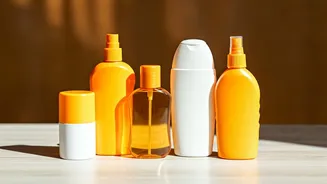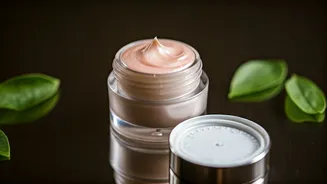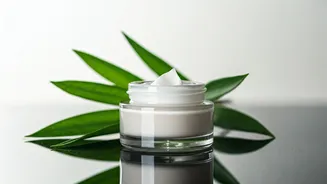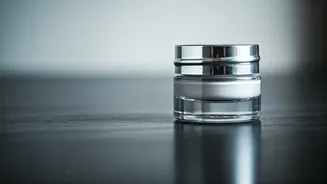Sunscreen Essentials
Sunscreen is a vital part of any skincare routine, shielding the skin from the damaging ultraviolet (UV) rays of the sun. Prolonged exposure to these rays can
lead to sunburn, premature aging, and increase the risk of skin cancer. Dermatologists often recommend using sunscreen with a Sun Protection Factor (SPF) of 30 or higher, which blocks approximately 97% of UVB rays. Sunscreen should be applied generously and reapplied every two hours, or more frequently if swimming or sweating. The correct use of sunscreen, along with other protective measures like wearing protective clothing and seeking shade during peak sun hours, can significantly reduce sun-related skin damage. This is especially important for the IN climate where the sun's intensity can be quite high throughout the year.
Dermatologist's Top Choice
The first recommendation typically involves a broad-spectrum sunscreen, known for its ability to shield the skin against both UVA and UVB rays. These types of sunscreens are often formulated with ingredients like zinc oxide and titanium dioxide, which are mineral-based and provide a physical barrier against the sun's rays. This is particularly beneficial for those with sensitive skin, as it minimizes the risk of irritation. Furthermore, these sunscreens are often water-resistant, making them ideal for outdoor activities, while they are also effective against premature aging. The recommendation of such sunscreen highlights the importance of choosing a product that provides comprehensive protection, ensuring skin health and preventing future damage.
Daily Wear Considerations
For daily wear, the dermatologist generally suggests a sunscreen that feels comfortable on the skin, and one that does not leave a heavy or greasy residue. Lightweight formulas are popular, as they can be easily incorporated into daily routines without feeling uncomfortable. Sunscreens with added moisturizers are often recommended for those with dry skin, to help keep the skin hydrated while providing sun protection. The choice of sunscreen also depends on individual skin types. People with oily skin might prefer oil-free or gel-based formulas to avoid clogged pores, while individuals with combination skin can use different sunscreens on different parts of their face. Therefore, the dermatologist recommends a sunscreen that fits seamlessly into their daily skincare practices, fostering consistent protection.
Chemical vs Mineral
The article may also consider the differences between chemical and mineral sunscreens. Chemical sunscreens absorb UV rays and convert them into heat, which is then released from the skin. They often contain ingredients like oxybenzone and avobenzone. On the other hand, mineral sunscreens, as mentioned earlier, use zinc oxide and titanium dioxide to create a physical barrier that reflects UV rays. Mineral sunscreens are often considered a better choice for sensitive skin because they are less likely to cause irritation. The selection between these types depends on individual preferences and skin sensitivity. Both types can be effective if used correctly, with the main goal being consistent application of sufficient amounts to maximize protection.
Application Techniques
Proper application is crucial for maximizing the effectiveness of any sunscreen. Dermatologists advise applying a generous amount to all exposed skin about 15-20 minutes before going outdoors. This ensures the sunscreen has time to fully bind to the skin and provide protection. Common areas often missed include the ears, back of the neck, and tops of the feet. Reapplication is equally important, every two hours or immediately after swimming or sweating. Remember, even waterproof sunscreens need to be reapplied, as their protective properties can diminish over time. Using enough sunscreen and reapplying frequently are vital habits that need to be learned. Therefore, understanding the application process is as important as choosing the right sunscreen.











